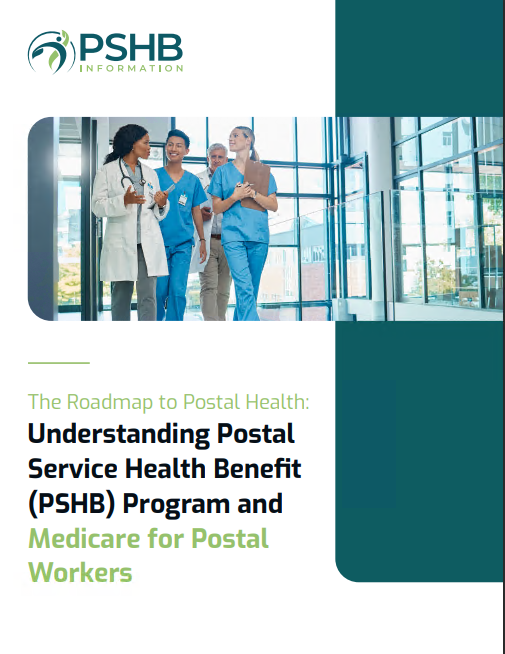Key Takeaways
-
The Postal Service Health Benefits (PSHB) program brings significant changes to how retirees approach healthcare, including integration with Medicare and tailored plan options.
-
To maintain coverage and optimize benefits, it’s essential to reevaluate your current health insurance strategy and understand the new PSHB requirements.
Understanding the PSHB Shift: What It Means for You
The transition to the Postal Service Health Benefits (PSHB) program in 2025 marks a pivotal moment for postal retirees. This new system replaces the Federal Employees Health Benefits (FEHB) program for Postal Service employees and retirees, introducing healthcare plans specifically designed for this group. With this shift comes the need to adapt and rethink your healthcare choices. Whether you’re newly retired or a seasoned annuitant, understanding the nuances of PSHB can make a world of difference in your healthcare experience. By taking proactive steps now, you can ensure that your health coverage meets your needs today and in the future.
A Quick Recap: How We Got Here
Before 2025, postal retirees relied on the FEHB program, which served all federal employees. However, the introduction of PSHB aims to provide more targeted benefits while streamlining costs for the Postal Service. This change aligns with legislative efforts to improve healthcare options for postal workers, ensuring comprehensive coverage while integrating with Medicare for eligible retirees. As this new system takes root, retirees are faced with an opportunity to evaluate how the updates align with their healthcare priorities and financial goals.
Key Changes You Need to Know
PSHB Enrollment Is Mandatory
To maintain health coverage in 2025 and beyond, postal retirees must enroll in a PSHB plan during designated enrollment periods. If you missed the 2024 Open Season, you may need to wait until the next enrollment period or experience a Qualifying Life Event (QLE) to make changes. Missing enrollment deadlines can lead to lapses in coverage, making it critical to stay informed about key dates and requirements.
Medicare Part B Integration
One of the most significant changes under PSHB is the requirement for Medicare-eligible retirees to enroll in Medicare Part B. This integration enhances your coverage by reducing out-of-pocket costs and providing access to additional benefits. However, exceptions apply for retirees who were already exempt as of January 1, 2025. For most retirees, enrolling in Part B ensures smoother coordination between Medicare and PSHB benefits, optimizing your healthcare strategy.
New Cost Structures
While general premium costs under PSHB are comparable to FEHB, your out-of-pocket expenses may differ due to Medicare coordination. Be sure to review your plan’s benefits, deductibles, and copayments to understand your financial responsibilities fully. Analyzing these cost structures now can help you budget effectively for the months and years ahead.
Medicare and PSHB: A Partnership You Can’t Ignore
Why Medicare Part B Is Essential
If you’re 65 or older and eligible for Medicare, enrolling in Part B is now a prerequisite for retaining your PSHB coverage. Medicare Part B covers outpatient services, preventive care, and durable medical equipment. By integrating with your PSHB plan, it reduces the burden of deductibles and coinsurance. This partnership not only enhances your access to care but also protects you from unforeseen medical expenses.
Coordination of Benefits
Under the PSHB program, Medicare becomes your primary payer for medical services, while PSHB acts as the secondary payer. This arrangement minimizes your out-of-pocket costs and ensures seamless access to healthcare providers. By coordinating benefits effectively, you can avoid duplicate payments and unnecessary financial strain.
Special Considerations
If you retired before January 1, 2025, or were exempt from Medicare enrollment requirements, you might not need to sign up for Part B. However, it’s worth reevaluating your coverage to ensure you’re not missing out on cost-saving opportunities. Consider consulting with a benefits advisor to clarify your unique circumstances and explore your options.
Reviewing Your Plan Options
What to Look For in a PSHB Plan
When comparing PSHB plans, consider factors like:
-
Provider Networks: Ensure your preferred doctors and specialists are included. A limited network could mean additional costs or inconvenience if you need out-of-network care.
-
Prescription Coverage: Verify that your medications are covered under the plan’s formulary. Understanding how your prescriptions are classified and covered is crucial for avoiding unexpected costs.
-
Cost Sharing: Assess deductibles, copayments, and coinsurance to determine your potential expenses. Comparing these elements across plans will help you identify the best value.
-
Supplemental Benefits: Many PSHB plans offer additional benefits like vision, dental, and hearing coverage. These extras can add significant value, particularly for retirees with specific healthcare needs.
Open Season and Beyond
If you’ve already selected a plan during the 2024 Open Season, review your plan’s Annual Notice of Change (ANOC) to understand any updates for 2025. If you’re unsatisfied with your current choice, mark your calendar for the next Open Season to explore new options. Taking the time to reassess your coverage each year ensures that your plan continues to meet your evolving needs.
Navigating Costs and Coverage
Premiums and Deductibles
The PSHB program offers a range of premiums based on plan selection. While Medicare integration helps offset some costs, be prepared for potential increases in deductibles and other out-of-pocket expenses. For 2025, Medicare Part B has a monthly premium of $185 and an annual deductible of $257, which you must account for in your budgeting. These costs highlight the importance of understanding your plan’s structure and anticipating expenses.
Prescription Drug Costs
PSHB enrollees who are Medicare-eligible automatically receive prescription drug coverage through a Medicare Part D Employer Group Waiver Plan (EGWP). This provides significant savings on medications, particularly for high-cost prescriptions. Additionally, the $2,000 cap on out-of-pocket drug expenses under Part D in 2025 eliminates the financial burden of the infamous “donut hole.” Planning for prescription costs is essential, especially for retirees managing chronic conditions or multiple medications.
Maximizing Your Benefits
Leverage Preventive Care
PSHB plans, in coordination with Medicare, cover a wide range of preventive services, often at no additional cost. Take advantage of these benefits to stay ahead of potential health issues and reduce long-term medical expenses. From routine screenings to immunizations, prioritizing preventive care can lead to better health outcomes and financial savings.
Stay Informed About Changes
Healthcare plans evolve annually, and PSHB is no exception. Review your plan’s details each year and stay informed about updates to Medicare policies that may affect your coverage. Proactively addressing changes ensures you’re always making the most of your benefits.
Key Deadlines and Reminders
Open Enrollment Periods
The next Open Season will take place from October 15 to December 7. This is your opportunity to make changes to your PSHB plan, ensuring it aligns with your current healthcare needs. Missing this window can limit your ability to adjust coverage until the next year.
Qualifying Life Events (QLEs)
Certain life events, like marriage, divorce, or a change in employment status, allow you to update your PSHB coverage outside of Open Season. Keep documentation of these events handy to streamline the process. Understanding how and when to leverage QLEs can provide flexibility in managing your health coverage.
Common Misconceptions About PSHB
“I Don’t Need Medicare Part B”
If you’re eligible for Medicare, skipping Part B enrollment can result in losing your PSHB coverage. While exceptions exist, they’re limited, so it’s crucial to confirm your eligibility status. Don’t risk gaps in coverage by misunderstanding these requirements.
“PSHB Plans Are Just Like FEHB”
While PSHB builds on the FEHB framework, it includes distinct features tailored to postal retirees. These differences require careful consideration to optimize your healthcare strategy. Recognizing the unique aspects of PSHB will help you make informed decisions about your coverage.
Planning Ahead: What’s Next?
The introduction of PSHB isn’t just a one-time adjustment; it’s an ongoing commitment to managing your healthcare effectively. Stay proactive by:
-
Regularly reviewing your plan options and benefits.
-
Keeping track of Medicare updates and deadlines.
-
Seeking guidance from the PSHB customer support team if you have questions.
By staying informed and adaptable, you can make the most of your healthcare coverage and enjoy peace of mind in your retirement. Taking charge of your healthcare planning now will set you up for long-term success.
Adapting to the New Healthcare Landscape
Navigating the transition to PSHB in 2025 requires a fresh perspective on your healthcare needs. From understanding Medicare integration to selecting the right plan, taking an active role in managing your coverage ensures you’re well-prepared for the years ahead. Don’t leave your healthcare to chance; start planning today to secure the benefits you deserve. By embracing the changes and making informed decisions, you can create a healthcare strategy that supports your well-being and financial stability throughout retirement.








